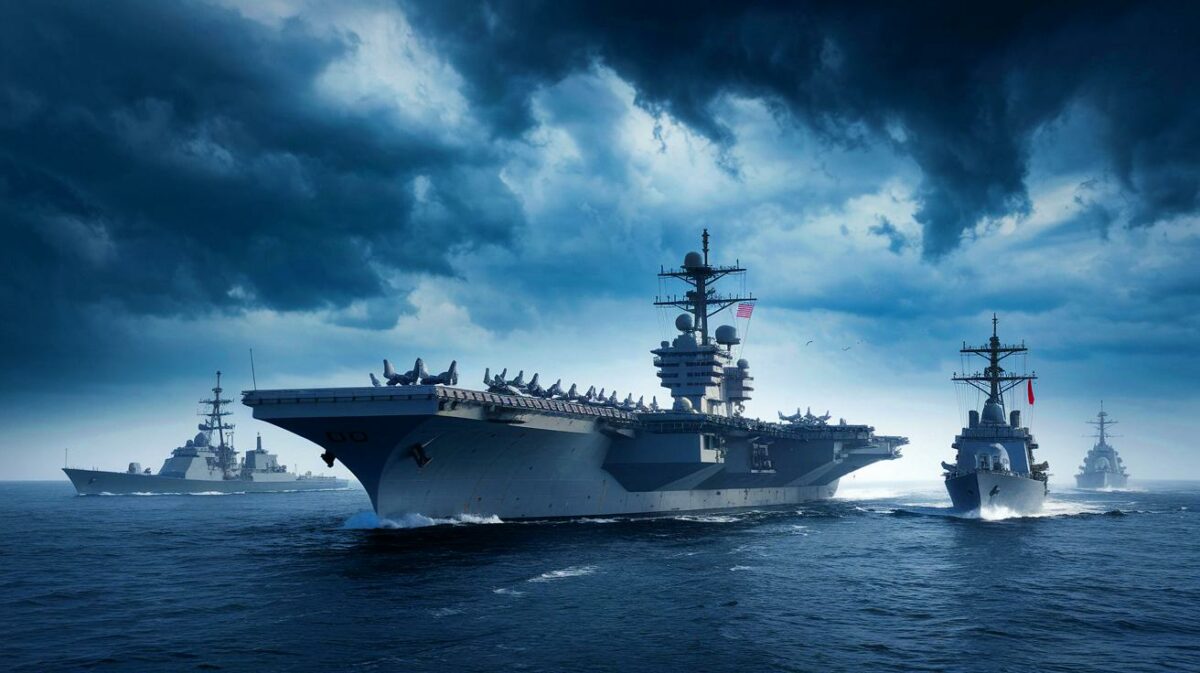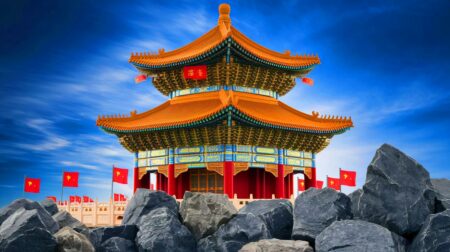| IN A NUTSHELL |
|
The geopolitical landscape is rapidly evolving, with the rise of China’s military capabilities causing significant concern for global powers, particularly the United States. In a startling revelation, U.S. Defense Secretary Pete Hegseth highlighted the potential threat posed by China’s advanced hypersonic missiles, which can purportedly incapacitate U.S. aircraft carriers within minutes. This development has sparked intense discussions on national security, military strategy, and the future of global power dynamics, urging policymakers and military strategists to revisit their approaches to modern warfare.
Strategic Challenges in Losing Wargames to China
In an astonishing admission, Secretary Hegseth underscored that the U.S. consistently loses to China in simulated war games conducted by the Pentagon. This stark reality is attributed to China’s strategic military build-up specifically aimed at countering U.S. military power. China’s growing military prowess is not just an abstract threat; it is a calculated effort to outpace the current U.S. military capabilities. Hegseth criticized the sluggish pace of U.S. bureaucratic processes and weapon acquisition systems, which have inadvertently given China an upper hand in these strategic simulations.
Moreover, Hegseth highlighted the strategic importance of the Panama Canal, a critical maritime route susceptible to Chinese influence. Approximately 40% of U.S. container traffic passes through this canal annually, making it a vital artery for U.S. trade. Since Panama shifted its diplomatic allegiance from Taiwan to China in 2017, Beijing has bolstered its influence in the region, including control over key ports at both ends of the canal. Hegseth acknowledged the ongoing threat China poses to this strategic waterway but expressed confidence in the recent U.S.-Panama security agreement aimed at safeguarding it.
Unveiling China’s Hypersonic Missile Capabilities
The advancement of China’s hypersonic missile technology marks a significant shift in the balance of power. According to the U.S. Department of Defense, China’s hypersonic missile programs have reached a level comparable to other global leaders in missile technology. The deployment of the DF-17 hypersonic glide vehicle and other advanced missile systems have transformed the People’s Liberation Army’s strategic capabilities, allowing for potential strikes on military bases and fleets in the Western Pacific.
Further developments include the DF-27 missile, which is capable of carrying multiple payloads, including nuclear options. This missile’s range, spanning up to 4,971 miles, classifies it as an intercontinental ballistic missile. Such capabilities potentially extend China’s military reach to U.S. territories like Alaska and Hawaii. Notably, a hypersonic glide vehicle tested by China in 2021 traveled an astonishing 24,854 miles, underscoring the advanced state of their missile technology. These developments demand a reevaluation of defense strategies to counteract the growing Chinese military threat.
Implications of China’s Control Over the Panama Canal
The Panama Canal, a pivotal route for global maritime trade, has become a focal point of geopolitical tension due to China’s increasing influence. Since Panama’s diplomatic pivot towards China, Beijing has invested heavily in regional infrastructure, raising concerns about potential control over this strategic waterway. Hutchison Ports PPC, a Hong Kong-based company with connections to the Chinese government, manages ports at both ends of the canal, heightening U.S. anxiety over China’s intentions.
Recognizing the canal’s significance, the U.S. has taken strategic measures to counterbalance China’s influence. A recent agreement between the United States and Panama allows for U.S. military presence in Panama-controlled facilities, aimed at ensuring the security of this crucial trade route. President Donald Trump has been vocal about the necessity to reclaim American strategic interests in the canal, emphasizing the need for vigilant oversight. As global trade dynamics evolve, the stability and security of the Panama Canal remain paramount for maintaining international commercial flows.
Reassessing U.S. Military Strategy in Light of New Threats
Given the rapid advancements in China’s military technology, particularly in hypersonic missiles, the U.S. faces an urgent need to reassess its military strategy and defense priorities. The revelation that U.S. power projection platforms, such as aircraft carriers, could be neutralized swiftly by Chinese missiles has ignited debates on the future of U.S. military doctrine. This calls for a comprehensive reevaluation of the United States’ strategic assets and the development of countermeasures to hypersonic threats.
Ensuring the security of critical infrastructures such as the Panama Canal and bolstering alliances with nations in key strategic regions are imperative. Furthermore, accelerating the modernization of U.S. military capabilities, streamlining acquisition processes, and fostering technological innovation are critical steps to maintaining global strategic balance. The current geopolitical landscape demands a proactive approach to safeguard national interests in the face of evolving global threats.
As the United States navigates these complex challenges, the question remains: How will the U.S. effectively counteract the growing military capabilities of its global rivals while maintaining international peace and security?
Did you like it? 4.6/5 (29)









Is this article legit? Seems a bit over the top! 🤔
Thanks for the detailed breakdown. It’s a wake-up call for the US military strategy.
How credible is the claim that China can obliterate all US carriers in 20 minutes?
The Pentagon needs to step up its game. Losing in war games is unacceptable!
China’s influence over the Panama Canal is more concerning than the missiles. Agree?
What measures are being taken to counteract China’s hypersonic missiles?
This is terrifying! What happened to US military superiority?
Sounds like clickbait. Don’t believe everything you read, folks. 🙄